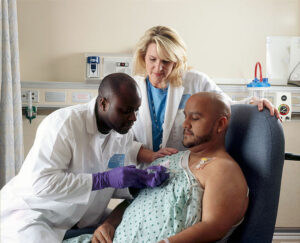
A new study published in JAMA Network Open addressed the issue of how medical students’ racial and ethnic identifies as well as student perceptions of the learning environments in medical school may be linked to burnout. The researchers analyzed data from more than 26,000 medical students who graduated from allopathic medical schools in the U.S. in 2016 and 2017. Of the survey respondents, 51.4% were male, and nearly 15% identified as individuals from groups underrepresented in medicine (URIM). These groups included Black, Hispanic/Latinx, Native American, and Pacific Islander.
The results of the researchers’ analysis showed that URIM medical students reported higher levels of burnout related to exhaustion as well as less favorable student-faculty interactions in their medical school learning environments. For all medical students, there was an association between learning environment and burnout such that those who rated their learning environment lowest were the most likely to experience higher rates of burnout.
These new data help to clarify the growing burnout that exists among those undergoing in the medical field. In particular, these results shed light on the burnous experienced in physicians from underrepresented groups and highlight the importance for finding ways to mitigate burnout for those experiencing it and prevent it from occurring in those at higher risk for burnout.
Reference
O’Marr JM, Chan SM, Crawford L, Wong AH, Samuels E, Boatright D. Perceptions on Burnout and the Medical School Learning Environment of Medical Students Who Are Underrepresented in Medicine. JAMA Network Open. 2022;5(2):e220115-e220115. doi:10.1001/JAMANETWORKOPEN.2022.0115
